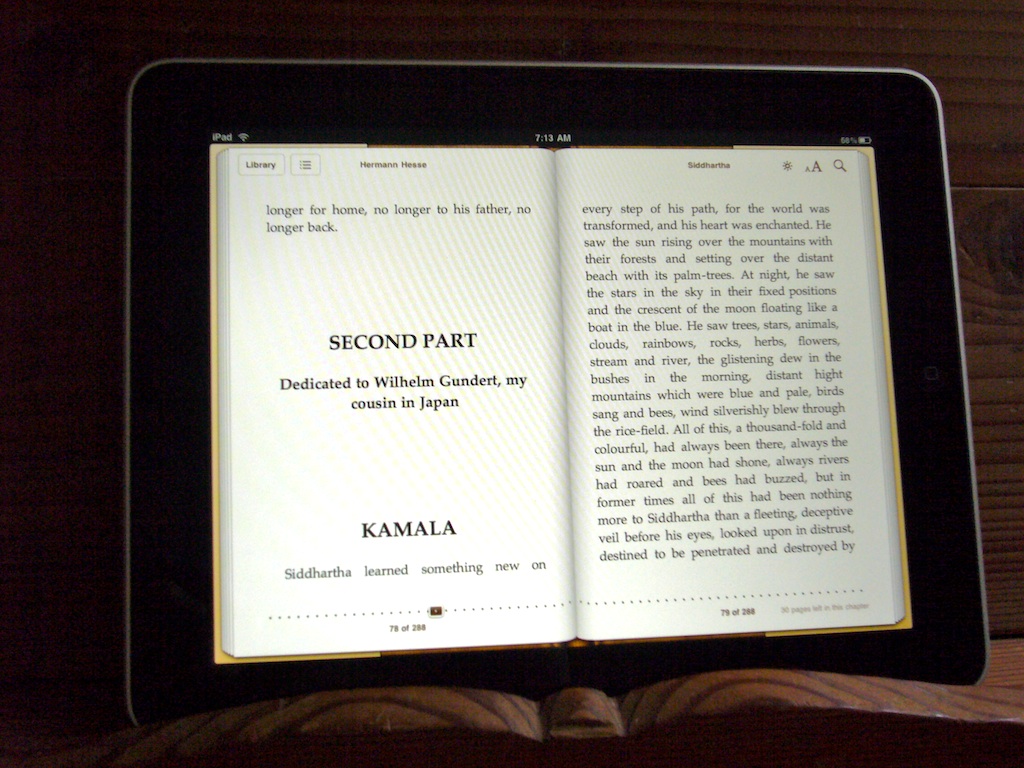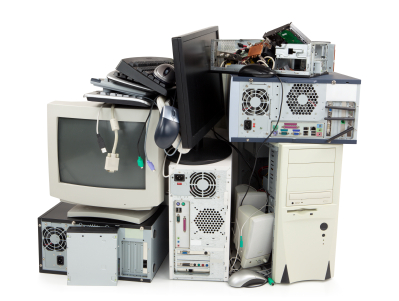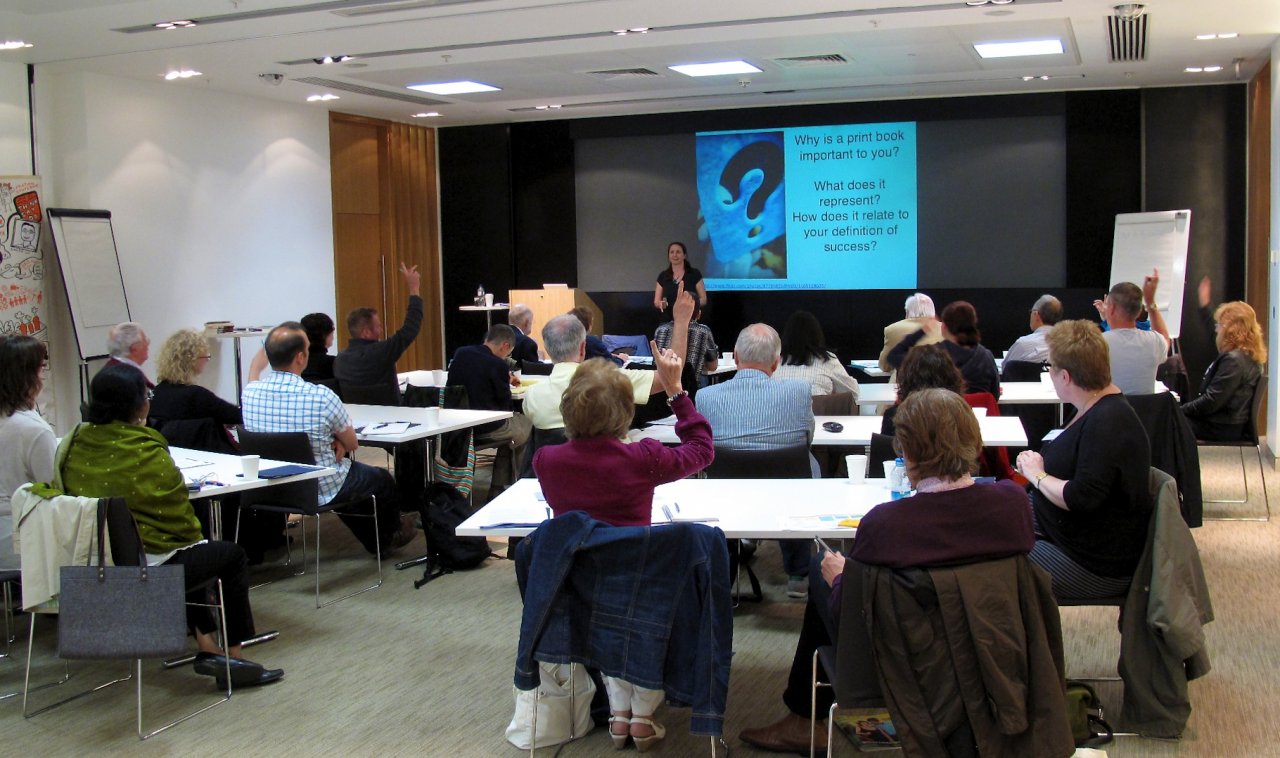Not everything that can be counted counts, and not everything that counts can be counted.
Albert Einstein, US (German-born) physicist (1879 – 1955)
On one level, the discussion over the environmental impact of ebooks and ebook readers, as compared to traditional books, is a little like the medieval discussions over how many angels can dance on the head of a pin. Traditional books are largely made of paper. Paper manufacturing is the third largest user of fossil fuels worldwide. As physical objects (unlike those dancing angels), books have weight and bulk and trucking them around (whether from manufacturer to bookstore or bookstore to home or home to new home) exacts an energy cost. Disposing of them at the end of their life cycle does, too.
Forged from electrons, digital books are almost weightless, but are hosted on energy-consuming servers. Jon Koomey, whose 2007 study on server power consumption led the drive toward energy efficient data centers, has noted tremendous improvements in this area. The atoms versus bits argument is still a strong one. Koomey says:
People get obsessed by direct-electricity use, but they forget that moving bits is usually better than moving atoms. I did a study with colleagues at Carnegie Mellon comparing downloading music to buying it on a CD, which found that downloads caused 40% to 80% fewer emissions than purchasing a physical CD. That study is coming out in the peer-reviewed Journal of Industrial Ecology this year, and it traces the whole lifecycle of making CDs as well the electricity used for downloads.
I think the result is an important one: replacing atoms with bits is generally good for the environment, and we should keep in mind this bigger picture when evaluating how much electricity is used by data centers and other information technology equipment.
You can’t really talk about ebooks without talking about the readers, which gets tricky. The manufacturing of computing devices and their ultimate impact on the waste stream are serious problems, both in terms of energy use and toxic materials. Linking one ebook to a single reader, though, isn’t completely straightforward. I might read a book I purchased on the Kindle on my desktop computer, Kindle e-reader, and iPhone (with my reading progress automatically updated with Whispersync). Other than the Kindle, these are multi-purpose devices, so what percentage of their use is devoted to ebook reading? The lifespan of the readers—whether a single-purpose or multi-purpose device—is a big factor in overall environmental impact. That printed book sitting on my shelf doesn’t require that I go out every three or four years and buy an electronic gadget to open it up and start reading.
On the “dancing angels” issue, author Dorothy L. Sayers concluded: “Angels are pure intelligences, not material, but limited, so that they have location in space, but not extension.” In this mode of thought, an infinite number of angels can be located on the head of a pin, since they don’t physically occupy space. In a parallel line of thought, how many ebooks can reside in an ereader? Hint: it’s not infinite. Depending on available device storage, it’s generally in the range of thousands and definitely not fixed, since you can cycle books in and out of the reader from their residence in the cloud. And there are millions of available books in the cloud.
Efforts to quantify the carbon footprint of ebooks generally stimulate spirited discussion and there have been a number of such discussions in the recent past. In summarizing some of the recent investigations into this issue, Adam Hodgkin notes that “we have to make some possibly heroic simplifying assumptions.” In eBook Carbon Footprint Breakeven, Green Blizzard takes a fresh at the problem and quotes a study by The Cleantech Group that calculated upfront production carbon footprint and lifetime operating costs of e-readers. The verdict: After 23 electronic downloads (or about one year’s worth of Kindle use) the carbon investment in the device has been recovered in comparison with 23 physical printed books. On the other side of the equation, in The Carbon Footprint Myth: The Un-Green iPad, makes the argument that devices in this class are conveniences and will raise the average carbon footprint.
I don’t think this issue has been resolved by any of the arguments presented so far. Clearly, not everything that counts can be counted. However, the overarching atoms versus bits model to frame the problem is still very compelling, as much so today as 15 years ago when Nicholas Negroponte wrote in Being Digital:
Today, I see my Evian story not so much being about French mineral water versus American, but illustrating the fundamental difference between atoms and bits. World trade has traditionally consisted of exchanging atoms. In the case of Evian water, we were shipping a large, heavy, and inert mass, slowly, painfully, and expensively, across thousands of miles, over a period of many days. When you go through customs you declare your atoms, not your bits. Even digitally recorded music is distributed on plastic CDs, with huge packaging, shipping, and inventory costs.
This is changing rapidly. The methodical movement of recorded music as pieces of plastic, like the slow human handling of most information in the form of books, magazines, newspapers, and videocassettes, is about to become the instantaneous and inexpensive transfer of electronic data that move at the speed of light. In this form, the information can become universally accessible. Thomas Jefferson advanced the concept of libraries and the right to check out a book free of charge. But this great forefather never considered the likelihood that 20 million people might access a digital library electronically and withdraw its contents at no cost.
The change from atoms to bits is irrevocable and unstoppable. Why now? Because the change is also exponential—small differences of yesterday can have suddenly shocking consequences tomorrow.
Here’s a link to the OBS online version of Being Digital, which includes other links to Negroponte’s monthly columns, many of them quite prescient.
The digital publishing revolution is in its infancy, and, as with any revolution, we won’t know the outcome, nor the full scope of the environmental impact, until the last shots are fired. In the meantime, we can do everything possible to push for energy efficient data centers, non-toxic cradle-to-cradle manufacturing techniques for e-readers, and improvements in the processes and materials used in traditional publishing.





